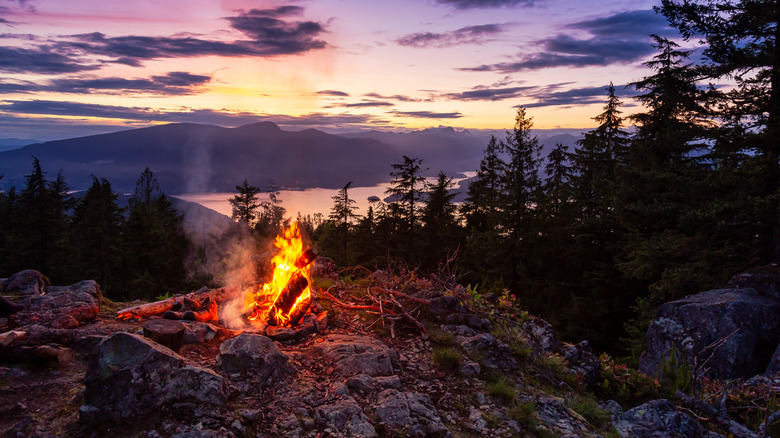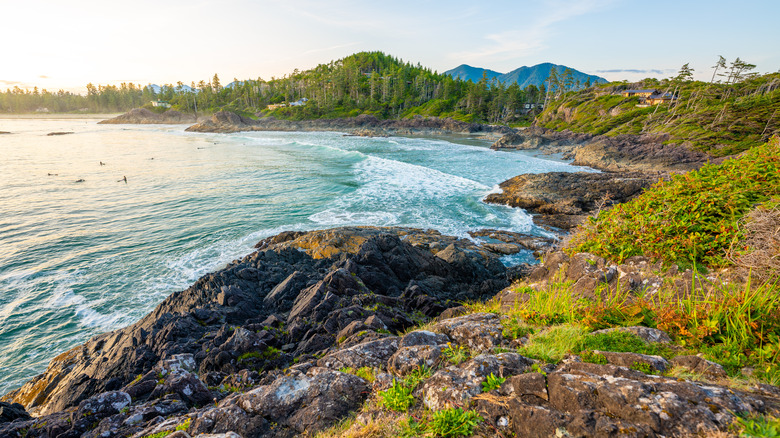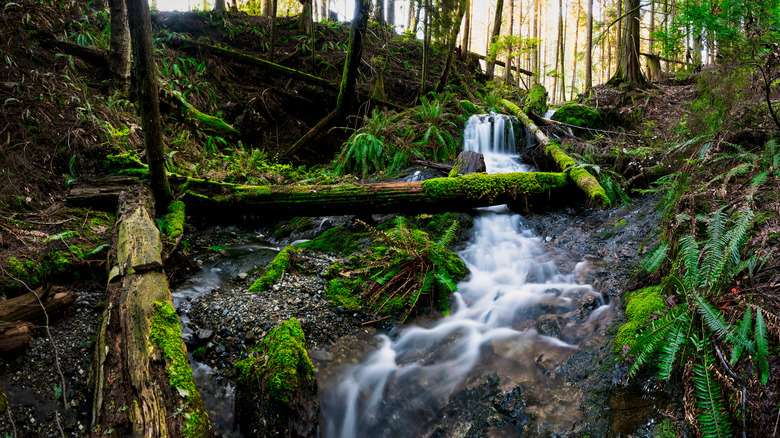Hike Along The Pacific Coast At This Scenic Canadian Trail
Tread lightly over the emerald foliage of this botanical haven situated along the far-flung corner of Vancouver Island. The West Coast Trail is a dangerous yet exotic backpacking excursion through the most remote regions of Canada's backcountry. The origins of this off-the-beaten track date back 200 years ago when British Columbia's indigenous natives first sailed the savaged seas encircling the stretch of coastline. The fierce waters and blankets of fog pervading the Pacific earned it the nickname "Graveyard of the Pacific."
Originally used as a travel passage for the aboriginal people of the First Nations in the 1800s, it was a popular rescue site for the frequent shipwrecks off the coast. It eventually took on the name Dominion Life Saving Trail. The network of winding paths through the coveted grounds don't come without enduring challenges to test the endurance of its travelers. It rose to fame in the 1970s, garnering attention among nomads and alpinists desperate for a taste of wilderness freedom. Today, it's an irreplaceable icon in Pacific Rim National Park.
Chart your journey
Seven days and 47 miles is what it takes to journey from one stretch of the trail to the other. Take a two-hour ferry ride from Vancouver's west seaport before reaching the primitive shores of Vancouver Island. With trailheads commencing from Bamfield and Port Renfrew, visitors can begin the week-long journey from either entry point.
Canada's Pacific Rim National Park Reserve requires visitors to reserve a permit before entering the reserve. Passes range from $300-400, covering the necessary trail permit, reservation and ferry fees. Harsh weather conditions and dangerous tides mean the park is closed from October-April. Summer offers the best conditions to tackle this track, with annual rainfall at its lightest during the warmer months. However, it's still always best to pack as if you are preparing for the worst conditions. Doing so can ensure that you're as safe as possible while embarking on your journey.
Topography and hot spots
Voyage through the dense undergrowth of the island's emerald rainforests and secluded beaches flanked by corridors of spruce and hemlock trees. The forested grounds are also home to Canada's tallest tree — a 314 foot Sitka Spruce. Make your way over deep gorges and water-worn gullies adapted for travel with cable cars and wooden bridges. The untamed wilderness is known to throw fierce winter storms, scattering the steep terrain with tangles of debris. The result is more than 100 moss-covered ladders, now cemented as part of the trail itself. Aside from the lush vegetation and captivating vistas, the region is home to several endemic species, including black bears, wolves, cougars and even sea lions.
This exciting wilderness playground boasts several captivating hot spots along the path, from sheltered caverns to its diverse aquatic ecosystems. Tsusiat Falls might be one of the Canadian island's most popular sights. The roaring falls cascade over the rocky bluffs before tumbling into the Pacific. Spend the night at the neighboring campgrounds to glimpse the glowing falls during moonlight hours. Make your way out of the tree-lined forest and stumble upon Owen Point, a sheltered alcove on the cusp between the rainforest and sandy shores. The wrinkled rocks are covered in jade sea moss, embodying the overlapping biomes.


